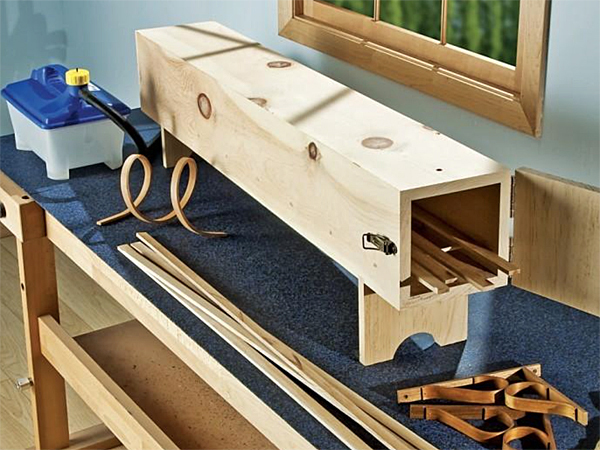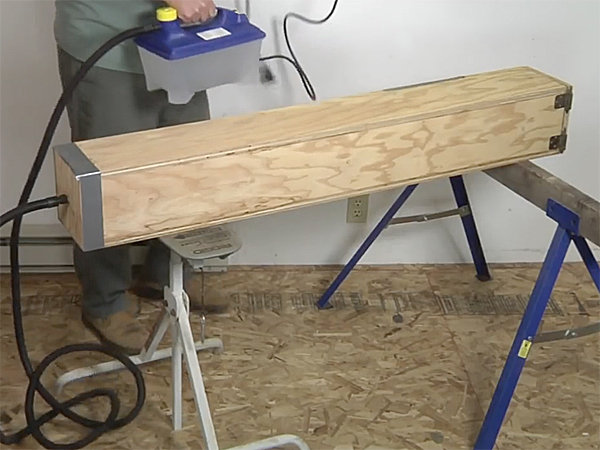
I was looking at a steam box in a new catalog and wondered to myself if it would be better to build one from a sheet of polystyrene foam board insulation, like the 2-in.-thick 4×8 sheets that are available at Lowe’s. The foam would seem to retain heat longer, be easier to move about and is waterproof. So why are all steam boxes made of what appears to be 1×6 or 1×8 lumber? I concede a hinged door would probably not be functional with foam board, but a cap to go over the outlet end, or even a 2-in.-thick plug could take its place. Also, is there any limit on how long a steam box should be? I assume that is governed somewhat by the length of wood being bent and deliverability of steam throughout, but again the foam board seems to be better suited for use in longer boxes as they could be joined and disassembled rather easily. – Darrel Bickel
Tim Inman: Why not use polystyrene for your new steam box? Heat! At steam temperatures, that foam will just melt away. A good rule of thumb for steaming is about one hour per inch of wood thickness. So ask yourself, will my steam box tolerate boiling temperatures for at least an hour or more without failing? Act accordingly. In terms of steam box proportions, the longer the box, the more “horsepower” you’ll need from your steam source. If you have a big enough boiler, you can heat anything. If your source of steam is a teakettle with a hose plugged into the spout, you’ll be struggling to do short stock.
Sandor Nagyszalanczy: I have seen as well as heard of steam bending boxes being made from all kinds of materials — solid wood (pine, hemlock, fir, etc.), PVC pipe, plywood—as well as from rigid foam insulation board. Most woodworkers seem to base their material choice simply on what they have lying around, or on what’s inexpensive to buy.
Insulation foam board seems to be a particularly intriguing choice for steam box construction. As you point out, a foam box retains heat very well: 2-in.-thick polystyrene has about 10 times the R-value of 3/4-in. plywood (R-value is the measurement of a material’s capacity to resist heat flow from one side to the other). You’re also right that foam is cheaper, lighter and more portable than plywood. Also, I agree that a plug for the open end of the box is better than trying to build a hinged door.
The only things I’d suggest you consider before building your foam steam box are heat and durability. I’m not 100 percent sure how well polystyrene foam stands up to the 212-degree temperatures generated by the steam. I’d do a quick test by exposing a small foam enclosure to steam for several hours, to make sure it doesn’t significantly deform or melt. And, while a foam steam box clearly isn’t as durable as a solid wood or plywood box, it probably doesn’t matter unless you plan to use it for years of bentwood production work.
You can find a detailed video on building a steam box from 50mm-thick styrofoam by clicking here. This European builder uses regular polyurethane adhesive to glue the entire box together.
(Editor’s Note: Sandor Nagyszalanczy used a plywood steam box and a Steam Bending Kit from Rockler to build an ash music stand for our December 2017 print issue. He made a video of the steam-bending process, and you can watch it by clicking here.)








